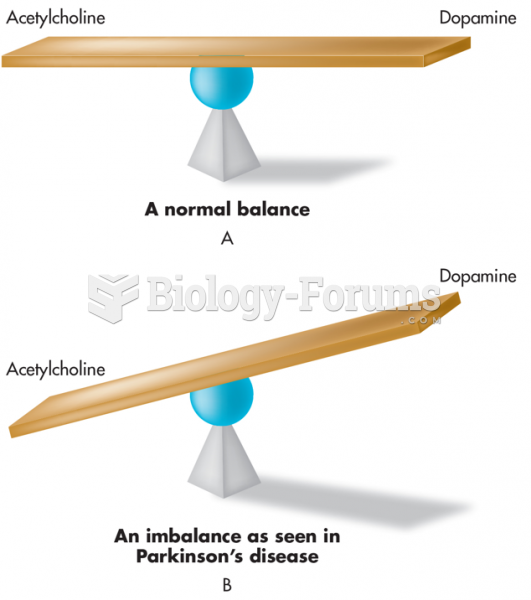Answer to Question 1
For much of our recorded history, the supernatural tradition described deviant behavior as a reflection of the battle between good and evil. During the last quarter of the 14th century, religious and lay authorities supported these popular superstitions, and society as a whole began to believe more strongly in the existence and power of demons and witches. Treatments included exorcism, in which various religious rituals were performed to rid the victim of evil spirits. Other approaches included shaving the pattern of a cross in the hair of the victim's head and securing sufferers to a wall near the front of a church so that they might benefit from hearing Mass.
An equally strong opinion reflected the view that insanity was a natural phenomenon, caused by mental or emotional stress, and was curable. Common treatments were rest, sleep, and a healthy environment. Other treatments included baths, ointments, and various potions.
Paracelsus, a Swiss physician who lived from 1493 to 1541, rejected notions of possession by the devil, suggesting instead that the movements of the moon and stars had profound effects on people's psychological functioning. This influential theory inspired the word lunatic, which is derived from the Latin word for moon, luna.
With the biological tradition, physical causes of mental disorders have been sought since antiquity. The Greek physician Hippocrates (460377 B.C.) and others suggested that psychological disorders could be treated like any other disease. They believed psychological disorders might also be caused by brain pathology or head trauma and could be influenced by heredity (genetics). Hippocrates considered the brain to be the seat of wisdom, consciousness, intelligence, and emotion. Therefore, disorders involving these functions would logically be located in the brain. Hippocrates also recognized the importance of psychological and interpersonal contributions to psychopathology.
The Roman physician Galen (approximately 129198 A.D.) adopted these ideas and developed them further, creating an influential school of thought that extended well into the 19th century. Physicians believed that disease resulted from too much or too little of one of the humors; for example, too much black bile was thought to cause melancholia (depression). The humoral theory was, perhaps, the first example of associating psychological disorders with a chemical imbalance, an approach that is widespread today.
The psychological tradition has a long tradition. Plato, for example, thought that the two causes of maladaptive behavior were the social and cultural influences in one's life and the learning that took place in that environment. If something was wrong in the environment, such as abusive parents, one's impulses and emotions would overcome reason. The best treatment was to reeducate the individual so that reason would predominate.
During the first half of the 19th century, a psychosocial approach called moral therapy became influential. Its tenets included treating patients as normally as possible in a setting that encouraged social interaction. Pussin had already removed chains used to restrain patients and instituted humane psychological interventions. Pussin persuaded Pinel to go along with the changes.
After William Tuke (17321822) followed Pinel's lead in England, Benjamin Rush (17451813), often considered the founder of American psychiatry, introduced moral therapy at Pennsylvania Hospital. Asylums had appeared in the 16th century, but they were more like prisons than hospitals. Dorothea Dix (18021887) campaigned for reform in the treatment of insanity. Having worked in various institutions, she had firsthand knowledge of the deplorable conditions imposed on patients with insanity, and she made it her life's work to inform the American public of these abuses. Her work became known as the mental hygiene movement. An unforeseen consequence of Dix's heroic efforts was a substantial increase in the number of mental patients. This influx led to a rapid transition from moral therapy to custodial care.
Answer to Question 2
Within this field are clinical and counseling psychologists, psychiatrists, psychiatric social workers, and psychiatric nurses, as well as marriage and family therapists and mental health counselors.
Clinical and counseling psychologists receive a Ph.D. (or sometimes an Ed.D., doctor of education, or Psy.D., doctor of psychology) and follow a course of graduate-level study, lasting approximately five years, that prepares them to conduct research into the causes and treatment of psychological disorders and to diagnose, assess, and treat these disorders. Counseling psychologists tend to study and treat adjustment and vocational issues encountered by relatively healthy individuals, and clinical psychologists usually concentrate on more severe psychological disorders. Psychologists with other specialty training, such as experimental and social psychologists, investigate the basic determinants of behavior but do not assess or treat psychological disorders.
Psychiatrists first earn an M.D. in medical school and then specialize in psychiatry during residency training that lasts three to four years. Psychiatrists also investigate the nature and causes of psychological disorders, make diagnoses, and offer treatments. Many psychiatrists emphasize drugs or other biological treatments, although most use psychosocial treatments as well.
Psychiatric social workers typically earn a master's degree in social work as they develop expertise in collecting information about the social and family situation of the individual with a psychological disorder. Social workers also treat disorders, often concentrating on family problems. Psychiatric nurses have advanced degrees and specialize in the care and treatment of patients with psychological disorders, usually in hospitals as part of a treatment team.
Finally, marriage and family therapists and mental health counselors typically spend one to two years earning a master's degree and are employed to provide clinical services by hospitals or clinics.







